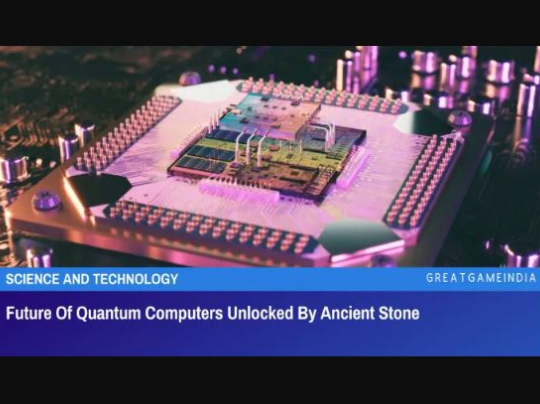Future Of Quantum Computers Unlocked By Ancient Stone

Quantum computing, it is believed, will enable researchers to solve more complicated questions in a fraction of the time. So it is indeed exciting that the future of quantum computers has been unlocked by an ancient stone.
The use of a cuprous oxide gemstone discovered in Namibia by researchers lead by the University of St Andrews in Fife, Scotland, has produced a quantum computing breakthrough. Although quantum computing has been labeled science’s “holy grail,” contemporary quantum computers are still too tiny to outperform present regular computers.
Scientists from Harvard University in Boston, Macquarie University in Sydney, Australia, and Aarhus University in Aarhus, Denmark collaborated on the study, which was printed in Nature Materials.
Rydberg polaritons were created using cuprous oxide (Cu2O). Rydberg polaritons are essential for the production of quantum simulators, that are recorded in quantum bits, because they rebound from light to matter.
Quantum bits can have any value between 0 and 1, whereas binary bits in traditional computers can only have a value of 0 or 1, enabling quantum bits to retain significantly more data and execute several tasks at the same time.
The project’s lead, Dr. Hamid Ohadi of the School of Physics and Astronomy at the University of St Andrews, said of their research, “Making a quantum simulator with light is the holy grail of science. We have taken a huge leap towards this by creating Rydberg polaritons, the key ingredient of it.”
Quantum computing, it is believed, will enable researchers to solve more complicated questions in a fraction of the time.
The researchers employed two extremely reflecting mirrors to confine light to make Rydberg polaritons. The cuprous oxide crystal was then implanted, thinned and polished into a 30-micrometer thick slab, and sandwiched between the two mirrors. The outcome was 100 times larger Rydberg polaritons than had ever been seen previously.
Buying the cuprous oxide crystal, as per Dr. Sai Kiran Rajendran, one of the study’s lead authors, was really the simple aspect.
- Source : GreatGameIndia


















